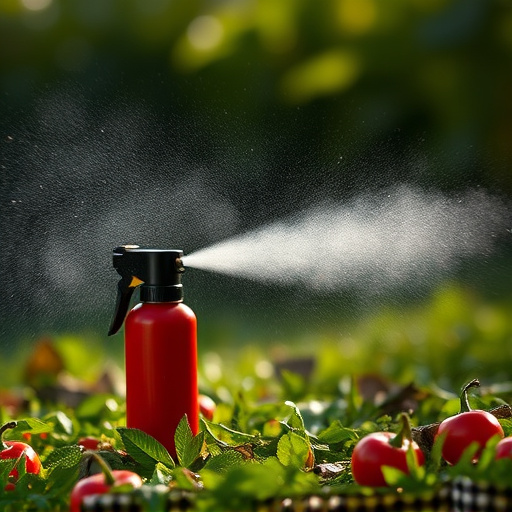Proper storage, including cool, dry conditions away from sunlight and heat, is crucial for maintaining pepper spray's effectiveness. Follow manufacturer guidelines, use light-blocking containers, and regularly check expiration dates (typically 2-3 years) to extend shelf life. Understand expiry dates and lot numbers for product safety and tracking. Store in secure locations, avoid damage/leaks, and train for accurate aiming to maximize tactical pepper spray's impact.
A tactical grade pepper spray dispenser is a crucial tool for personal safety, but understanding its storage and shelf life is essential for optimal performance. This comprehensive guide delves into the chemical composition of pepper spray, factors influencing its longevity, and best practices for storage. Learn how to interpret expiry dates and lot numbers, follow usage guidelines, and maximize the effectiveness of your pepper spray through these expert tips on pepper spray storage and shelf life.
- Understanding Pepper Spray's Chemical Composition
- Factors Affecting Shelf Life of Pepper Spray
- Proper Storage Methods for Extended Lifespan
- Interpreting Expiry Dates and Lot Numbers
- Maximizing Effectiveness Through Usage Guidelines
Understanding Pepper Spray's Chemical Composition
Pepper spray is a powerful tool designed for self-defense, utilizing capsaicin, the active ingredient found in chili peppers. Understanding its chemical composition is key to understanding its effectiveness and proper usage. This oleorectant agent irritates the eyes, nose, and respiratory system, temporarily disabling an attacker, giving users precious time to escape or defend themselves.
When it comes to pepper spray storage and shelf life, proper handling is essential. Most tactical-grade pepper sprays are designed for durability but require specific conditions to maintain their potency. Keeping them in a cool, dry place, away from direct sunlight and heat sources, helps preserve their chemical composition. Following manufacturer guidelines for shelf life ensures the spray remains effective when needed most.
Factors Affecting Shelf Life of Pepper Spray
The shelf life of pepper spray is influenced by several factors, with proper storage being paramount. Environmental conditions play a significant role; extreme temperatures, both hot and cold, can accelerate degradation. Direct sunlight and high humidity levels also contribute to the breakdown of the active ingredients, reducing effectiveness over time.
Additionally, the quality of the pepper spray itself matters. Manufacturer recommendations for storage conditions should be followed closely. Using suitable storage containers that block light and maintain consistent temperatures can extend the product’s viability. Regular checks on expiration dates and visible signs of deterioration are essential to ensure the potency remains effective when needed.
Proper Storage Methods for Extended Lifespan
Proper storage is key to maintaining the effectiveness and longevity of tactical pepper spray. It’s recommended to store the dispenser in a cool, dry place away from direct sunlight, extreme heat, or freezing temperatures. Environmental factors can accelerate degradation, so keeping it in a controlled setting ensures optimal performance. Ideal locations include locked cabinets or secure boxes, especially in vehicles where temperature fluctuations are common.
Additionally, keep pepper spray out of reach of children and unauthorized individuals to prevent accidental discharge. Always follow the manufacturer’s guidelines for specific storage requirements, as different models may have unique needs. Regular inspection is also beneficial; check the dispenser for any signs of damage or leakage, ensuring it remains sealed to maintain shelf life, which can vary but is typically around 2–3 years from the manufacturing date.
Interpreting Expiry Dates and Lot Numbers
When it comes to tactical grade pepper spray, understanding expiry dates and lot numbers is crucial for ensuring its effectiveness and safety. These details provide insights into the product’s shelf life and quality control measures. Expiry dates typically indicate when the spray is expected to maintain its full potency and performance. Check for a date stamp or ‘use by’ mark, which usually ranges from 1 to 3 years after manufacturing.
Lot numbers, often found on the packaging or can, help track specific batches of pepper spray. They enable manufacturers and users to identify any production issues or recalls. Always verify that the lot number corresponds with up-to-date safety guidelines and quality standards. Proper Pepper Spray Storage involves keeping it in a cool, dry place away from direct sunlight. Regularly check for any signs of damage, leakage, or changes in scent, which could indicate spoilage.
Maximizing Effectiveness Through Usage Guidelines
Maximizing the effectiveness of a tactical grade pepper spray dispenser requires adhering to specific usage guidelines. First, ensure proper storage and maintenance to preserve its shelf life. Pepper spray should be kept in a cool, dry place away from direct sunlight or extreme temperatures. Following manufacturer recommendations for storage conditions is crucial.
Second, understand the distance and angles at which the spray is most effective. Typically, pepper spray projects an aerosolized solution that can reach up to 20 feet, but the concentration decreases with increasing distance. Aiming directly at the target’s face or eyes maximizes impact. Training and practicing usage techniques are essential to ensure accuracy in high-stress situations.
A tactical grade pepper spray dispenser is a powerful personal safety tool, but its effectiveness relies heavily on proper storage and understanding its shelf life. By grasping the chemical composition, factors influencing longevity, and adhering to optimal storage methods, users can ensure their pepper spray remains potent and ready when needed. Interpreting expiry dates and lot numbers, along with following usage guidelines, are crucial steps in maximizing its tactical value. With these practices in place, individuals can stay prepared, confident, and safe.
